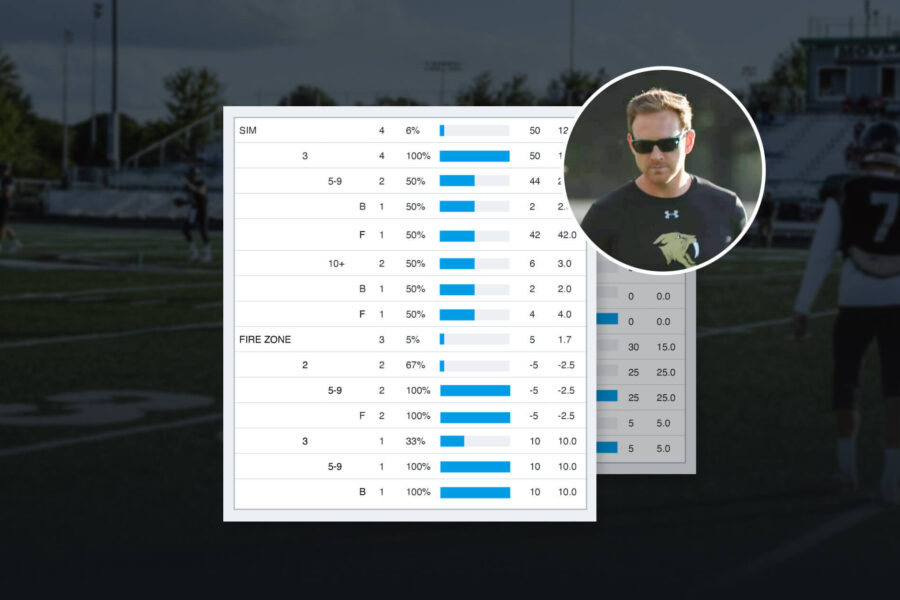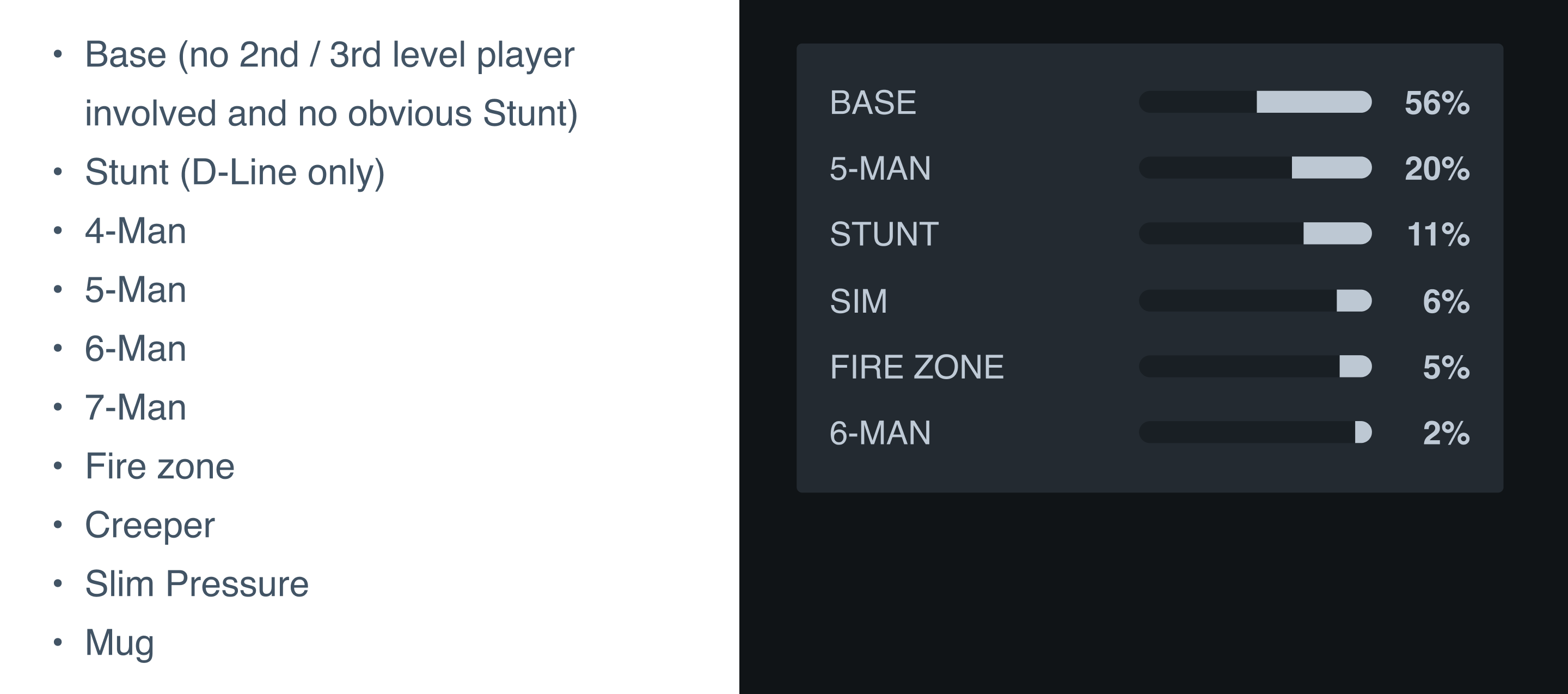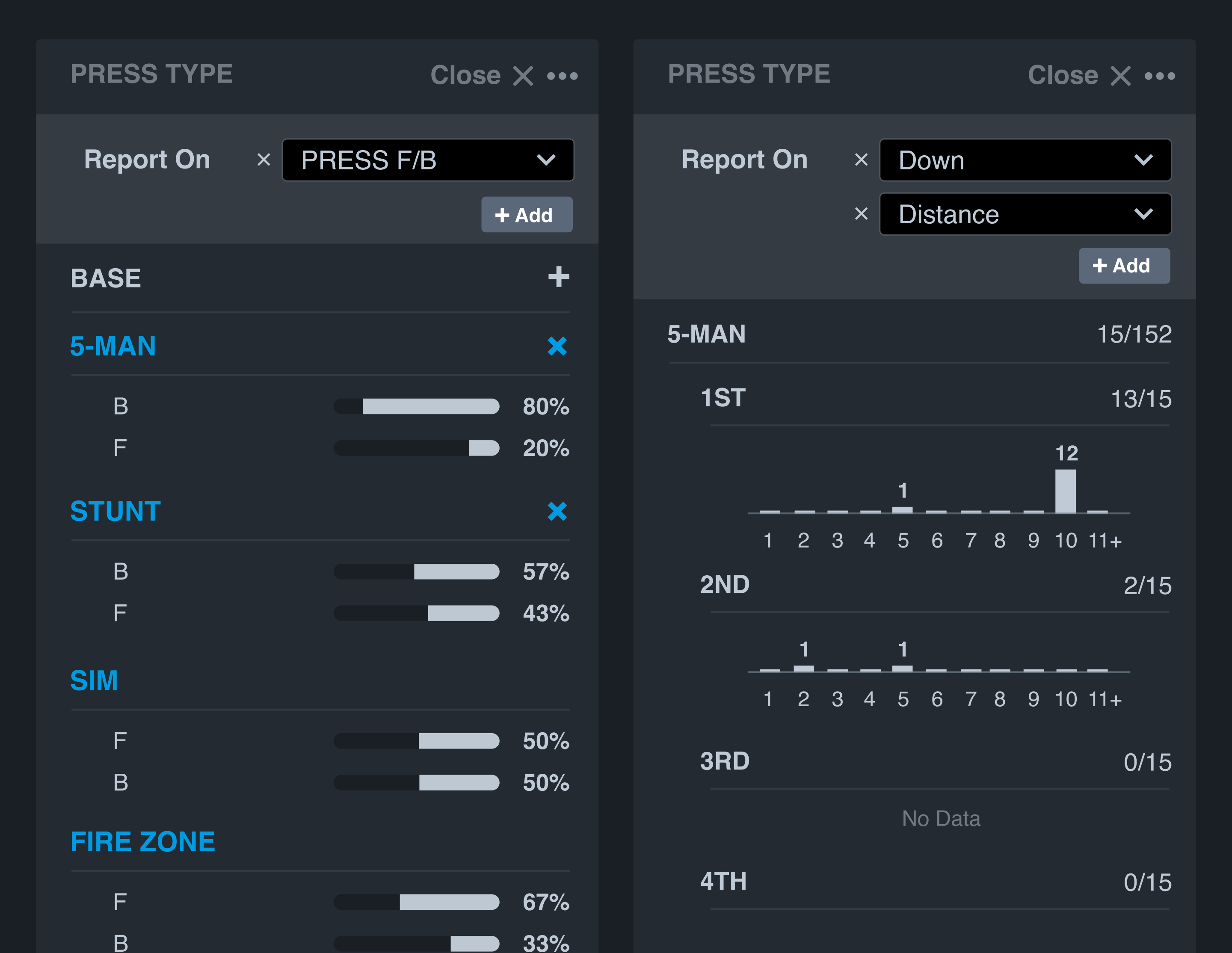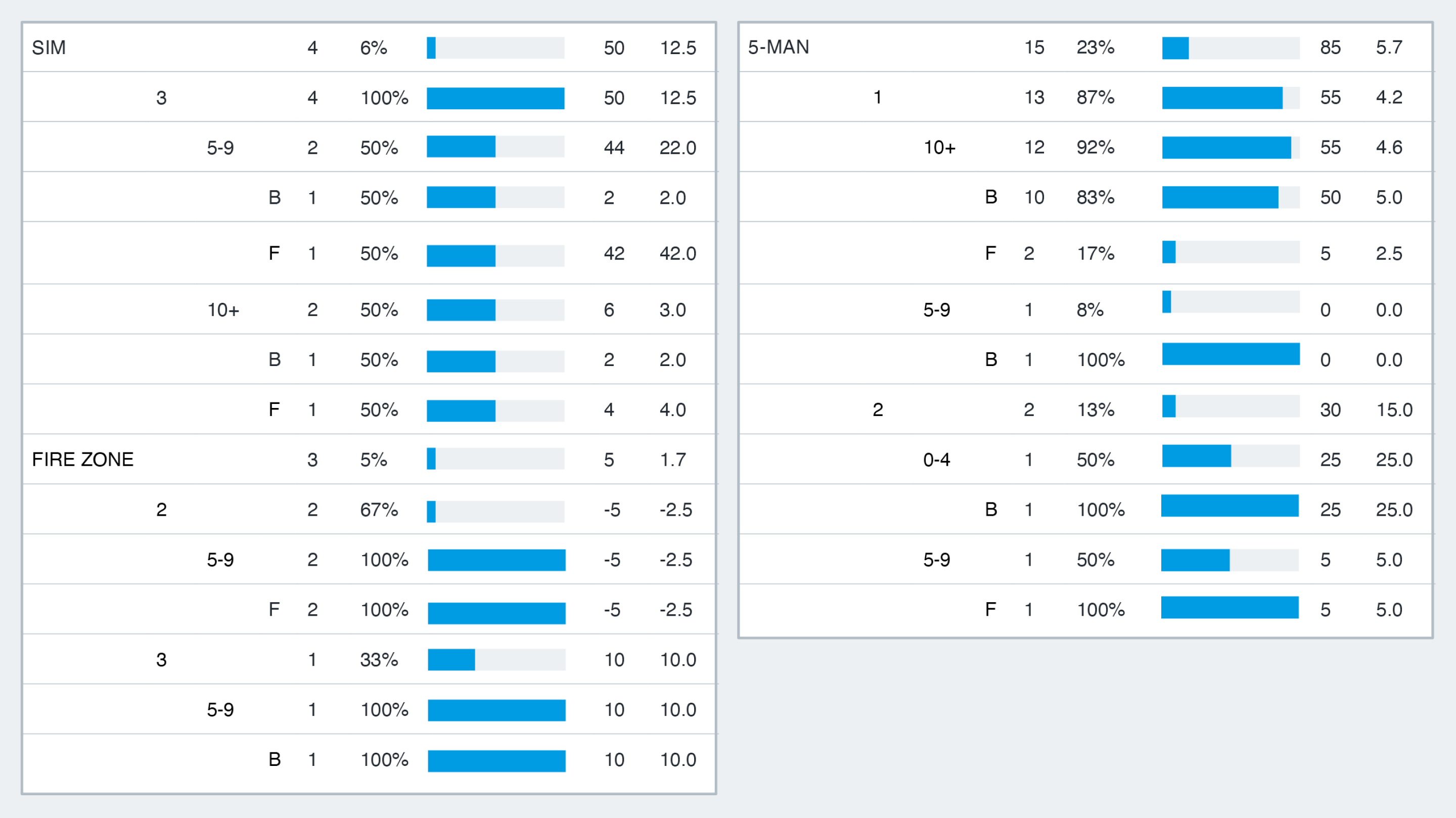Scouting and Gameplanning for Defensive Pressures

The types of pressures defenses deploy are more diverse than ever. One of Wisconsin’s most respected offensive minds shows you an efficient way to prep for them in Hudl Beta.
The proliferation in variety of defensive pressures has seen a surge in recent seasons. With the modern advances in the passing game, many “old school” pressures are becoming ineffective. Defensive coordinators are in turn becoming more and more adept at finding creative ways to bring pressure but still maintain coverage integrity.
Hudl Beta and reports have been an invaluable tool for us when scouting and game prepping for pressures.
The first step in our process is using custom columns to identify “Pressure Type” and “Pressure ID.”
“Pressure Type” looks at the number of defenders involved in the pressure and/or if it is a specific style of pressure. We use the following inputs:

“Pressure ID” gives the pressure a name to help identify the type. These names are very intentional and help us categorize them. For example, we have stolen the common defensive terminology for creepers by naming them after prominent NFL quarterbacks with last names beginning with F (field-based) or B (boundary-based).
There are a myriad of ways to look at the data and reports, but these are what we find to be most useful at the base level:
- Pressure Type - Down & Distance
- Pressure Type - Backfield
- Pressure Type - Field/Boundary
- Pressure Type - Field Zone (we break the field up into four zones)
These give us a general read on the personality of the defensive coordinator and his tendencies. Does he like to bring pressure on certain downs and distances? Does he have a favorite field zone to bring pressure? Does he base his pressures on field/boundary, or does he like to attack based on location of the running back? This will assist us in our next step by giving us an indication of which fields we should combine to glean more actionable tendencies.


Once we have these tendencies, we will look at “Pressure ID” within each breakdown to decide which specific pressures we’ll focus on during our game prep and practice. We typically choose the top five overall that we find either the most challenging, or just simply the most common, and focus on those throughout the week with our team.
While the original Hudl reports do an outstanding job of compiling and displaying this data, Hudl Beta has streamlined the process and allows us to quickly filter in and out of different fields on the fly, drastically reducing the time it takes to scout and game plan.
You can see all of Ambrose’s Wisconsin Football Coaches Association Zoom clinics here, where he’s gathered top high school and college minds from across the nation. You can also email him at ambrose.drew@gmail.com, or follow him on Twitter at @DrewAmbrose_.



































